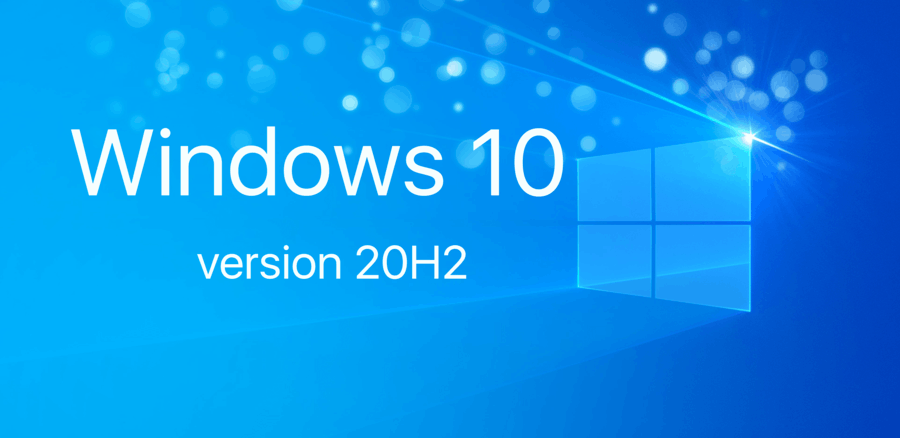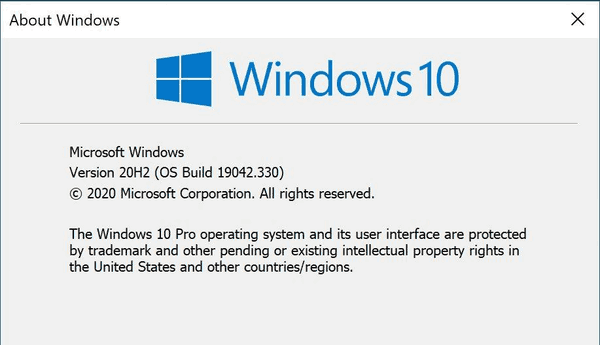Microsoft has finally released Windows 10 version 20H2. The OS, which is also known as 'October 2020 Update', is now available in the stable branch, so anyone can download and install it. The official announcement reveals some details regarding the support of the OS for customers.

Microsoft Windows 10 version 20H2 is the successor to the May 2020 Update, version 2004 released in May 2020. Windows 10 version 20H2 is a minor update with a smaller set of enhancements focused primarily on select performance improvements, enterprise features, and quality enhancements. You can find what's new in this Windows 10 version here:
Advertisеment
What’s new in Windows 10 version 20H2
As a second half (H2) of the calendar year release, Enterprise and Education editions of Windows 10, version 20H2 will receive 30 months of servicing and support beginning today. Microsoft recommends that commercial organizations begin targeted deployments to validate that their apps, devices and infrastructure work as expected with the new release os the OS. To support this effort, Windows 10, version 20H2 is now available through Windows Server Update Services (including Configuration Manager), Windows Update for Business and the Volume Licensing Service Center (VLSC). The following new features are noted for IT Pros.
- Mobile device management (MDM) – You can now make granular changes to Local Users and Groups on an MDM-managed Windows 10 device by using the Local Users and Groups MDM policy.
- Windows Autopilot – There have been many enhancements to Windows Autopilot since version 2004, including Windows Autopilot for HoloLens, Windows Autopilot and co-management, and enhancements to Autopilot reporting. For details on all of these and more, see Managing Windows Devices with Microsoft Endpoint Manager. Here's a summary of some of the enhancements:
- Windows Autopilot for HoloLens – You know HoloLens as that untethered, holographic device. HoloLens 2 devices are commercial-ready, support Azure AD, MDM, kiosk mode, BitLocker, Windows Store for Business, and Windows Update for Business. As adoption increases, setting up your HoloLens 2 devices just got easier, with a Windows Autopilot for HoloLens 2 self-deploying mode.
- Windows Autopilot with co-management – Co-management policy can be set during Autopilot deployment to ensure workloads are managed from the appropriate source.
- Windows Autopilot ESP + task sequences – Using a task sequence as part of Windows Autopilot allows you to take advantage of your Configuration Manager investments and reuse those task sequences to configure devices. The task sequence can integrate right into the Enrollment Status Page (ESP), blocking access to the desktop until the task sequence completes.
- Enhancements to Windows Autopilot deployment reporting – Currently in preview, you can monitor the status of Autopilot deployments in the Microsoft Endpoint Manager admin center: endpoint.microsoft.com. From there, select Devices > Monitor and scroll down to the Enrollment section. Click Autopilot deployment (preview). As this section grows, you will soon be able to see ESP duration broken down at a device and user targeted ESP and app installation status, policy status, and other enhancements. So stay tuned!
- Microsoft Defender Application Guard for Office – Microsoft Defender Application Guard, designed for Windows 10, now supports Office. With this support, you can launch untrusted Office documents (those that come from outside the Enterprise) in an isolated container to prevent potentially malicious content from compromising the user's computer or exploiting their personal contents.
- LCU + SSU = single payload – Starting with Windows 10, version 20H2, LCUs and SSUs have been combined into a single cumulative monthly update, available via Microsoft Catalog or Windows Server Update Services.
Version 20H2 will be delivered to devices currently running Windows 10, version 2004 using the KB4562830 enablement package. This is the same technology Microsoft used to update devices from Windows 10, version 1903 to version 1909.

Starting in Windows 10 version 20H2, Microsoft is using different version numbering. Microsoft had switched to a format that represents the half of the calendar year in which the release becomes available in retail and commercial channels. The company had explained that for Windows 10 version 20H2 you will see "version 20H2" instead of "version 2009", as you could expect. This numbering scheme is a familiar approach for Windows Insiders and is designed to provide consistency in Microsoft's version names across releases for their commercial customers and partners. Microsoft will continue to use a friendly name, which is October 2020 Update, in consumer communications.
Microsoft is actually delivering all the features to Windows 10 version 2004 with latest cumulative updates. If you have Windows 10, version 2004, build 19041.423 or above installed, you can quickly enable all the 20H2 features right now with a single Registry tweak. Check out the post
Unlock Windows 10 20H2 features in Windows 10 version 2004 without upgrading
Support us
Winaero greatly relies on your support. You can help the site keep bringing you interesting and useful content and software by using these options:
